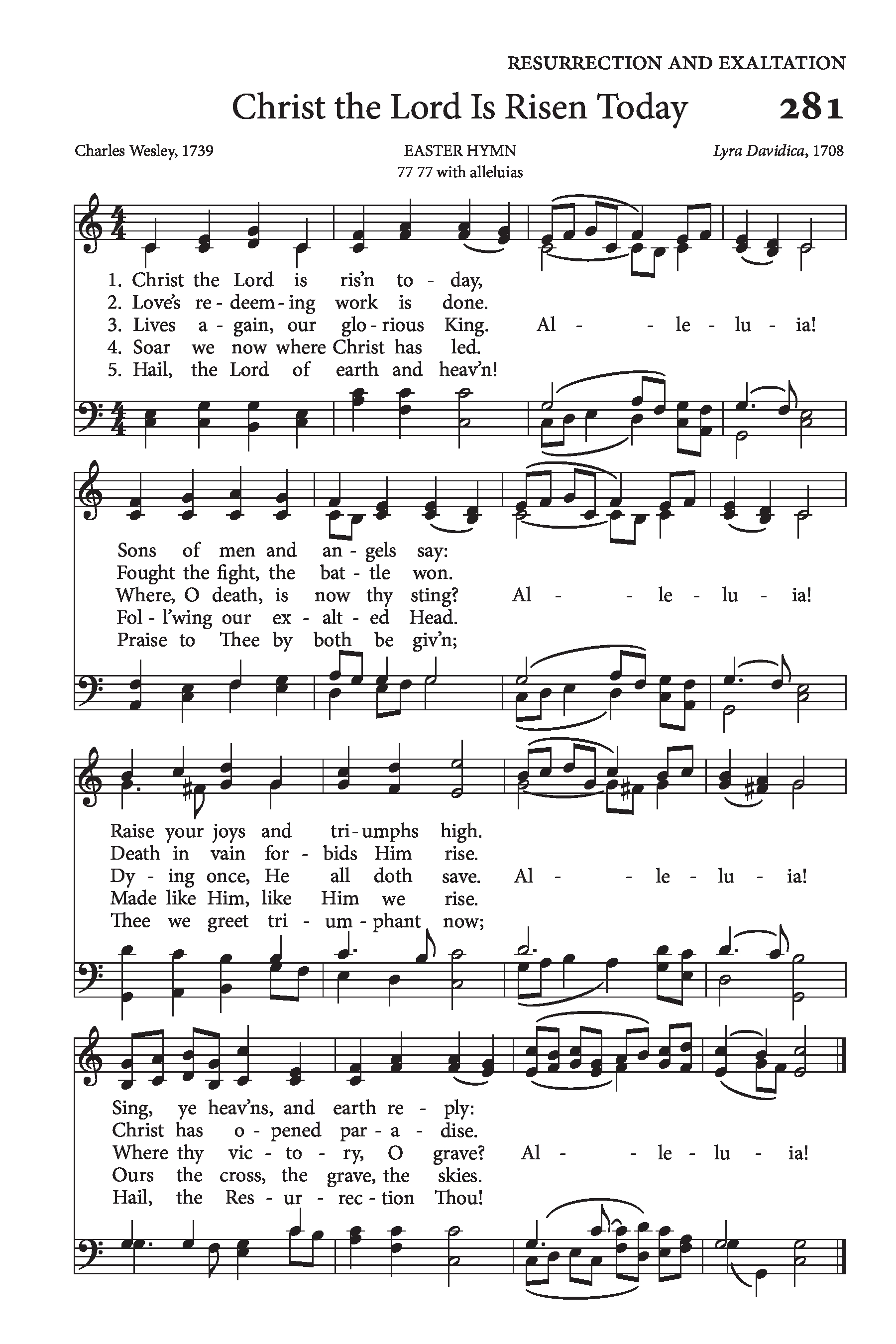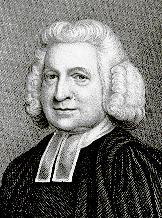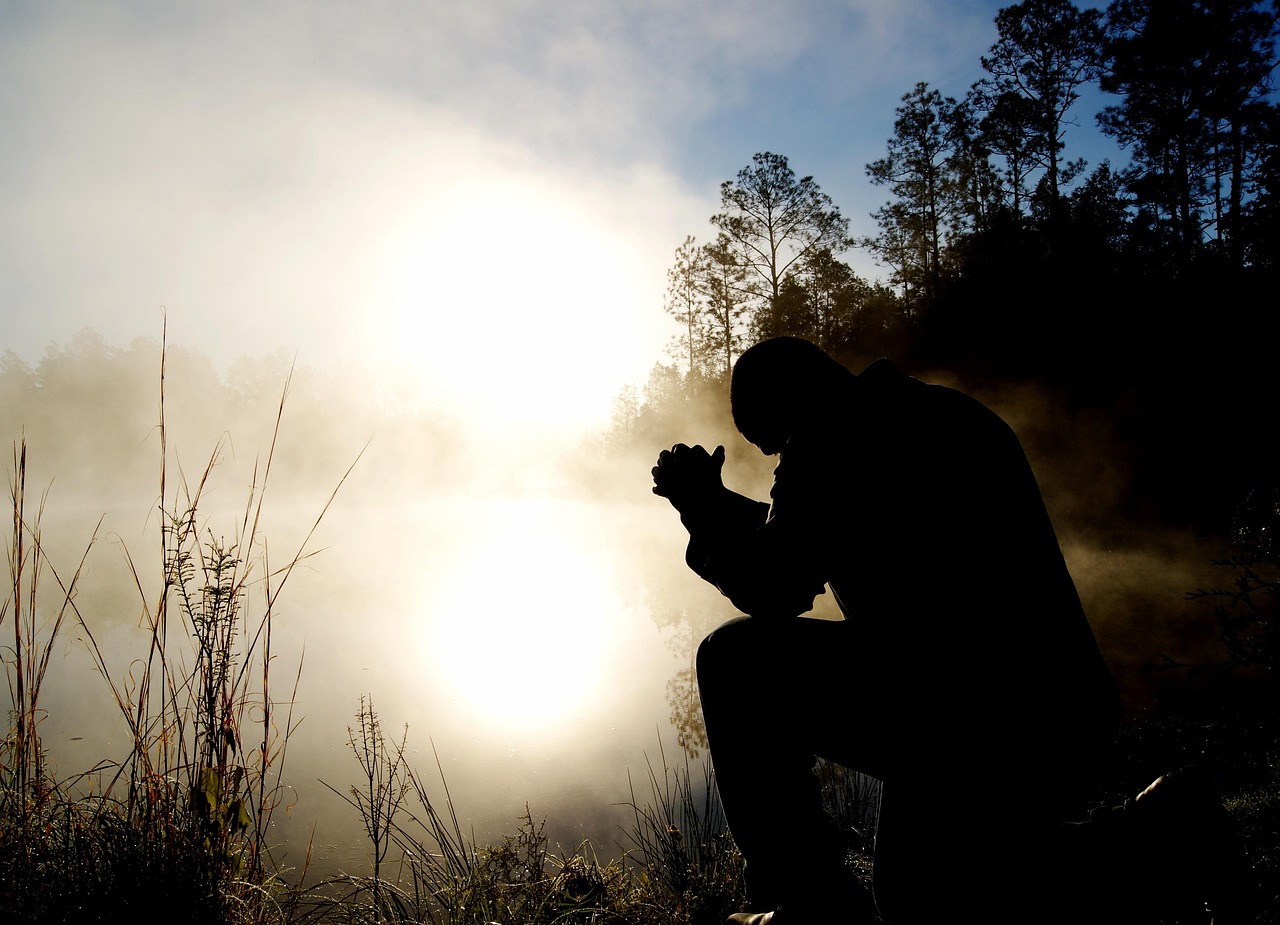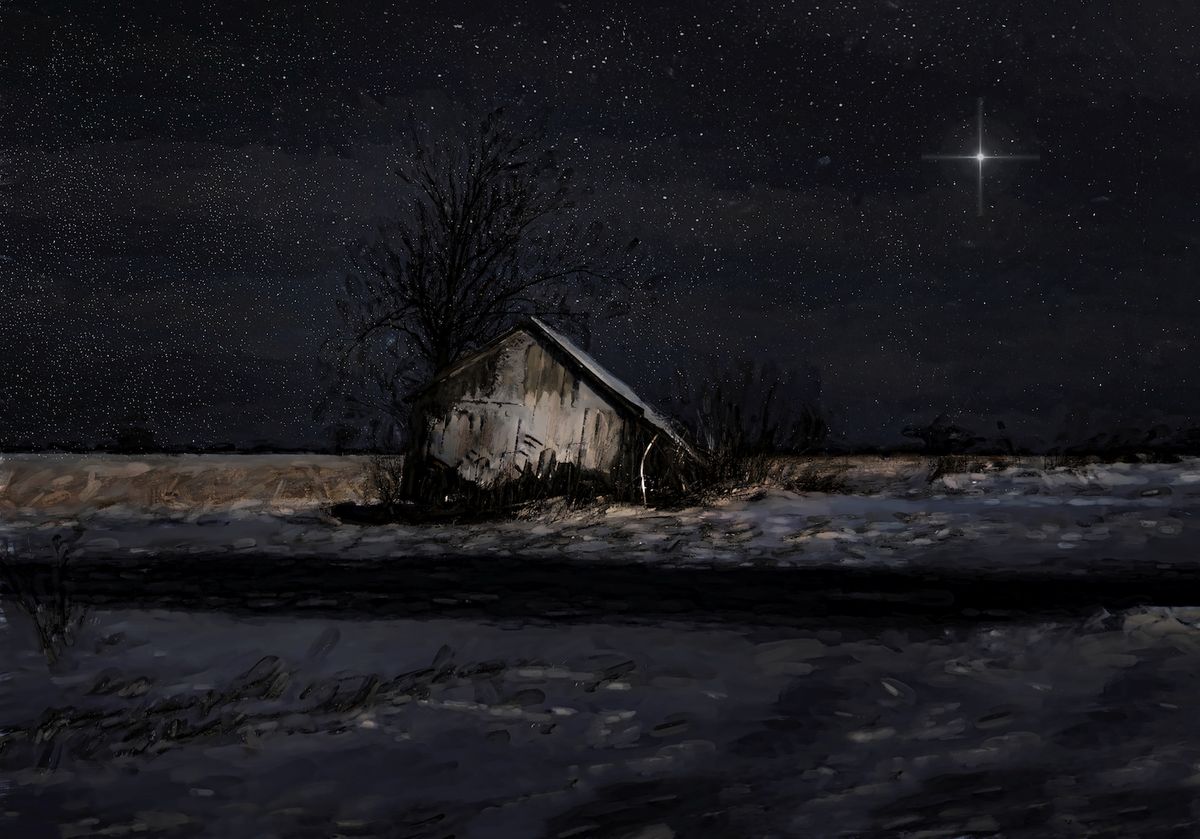Christ the Lord is risen today
By Charles Wesley
Lyrics
Earth and heaven in chorus say, Alleluia!
Raise your joys and triumphs high, Alleluia!
Sing, ye heavens, and earth reply, Alleluia!
Fought the fight, the battle won, Alleluia!
Death in vain forbids him rise, Alleluia!
Christ has opened paradise, Alleluia!
Where, O death, is now thy sting? Alleluia!
Once he died our souls to save, Alleluia!
Where's thy victory, boasting grave? Alleluia!
Following our exalted Head, Alleluia!
Made like him, like him we rise, Alleluia!
Ours the cross, the grave, the skies, Alleluia!
Praise to thee by both be given, Alleluia!
Thee we greet triumphant now, Alleluia!
Hail the Resurrection, thou, Alleluia!
Everlasting life is this, Alleluia!
Thee to know, thy power to prove, Alleluia!
Thus to sing, and thus to love, Alleluia!
Bible Reference
Acts 5:30-31
About This Hymn
“He is not here: for He is risen, as He said. Come, see the place where the Lord lay.” — Matthew 28:6 (KJV)
The first Wesleyan chapel established in London, England, was an abandoned iron foundry, which became known as the Foundry Meeting House. It was in this very place, during the inaugural service in 1739—just one year after Charles Wesley’s profound conversion experience at Aldersgate—that he introduced a hymn specifically written for the occasion. This powerful resurrection hymn was originally titled “Hymn for Easter Day” and featured eleven stanzas, each consisting of four lines. It was first published in The Foundry’s Collection, a hymnal that contained “hymns set to music as they are commonly sung at the Foundry,” along with a supplementary collection of Psalms. The volume included approximately fifty hymns and reflected the vibrant worship style of the early Methodist movement.
The enduring popularity of this hymn owes much to the triumphant and uplifting tune with which it has long been associated. Though the composer of the melody remains unknown, the tune first appeared anonymously in the 1708 hymnal Lyra Davidica, published in London. The exuberant “Alleluia” that concludes each line of the hymn was not penned by Wesley himself but was later added by an editor to suit the rhythm and joyful nature of the tune. The term “Hallelujah” or “Alleluia,” drawn from ancient Hebrew worship, was a common expression of praise among early Christians. Church Father Jerome, who translated the Bible into Latin and died around A.D. 420, wrote that in his time, the very ceilings of Christian worship halls would tremble from the resounding “Hallelujahs” as congregants lifted their voices in praise.
Charles Wesley, one of the most prolific and influential hymn writers in Christian history, composed many other cherished hymns besides this Easter anthem. Among his most beloved works are “Jesus, Lover of My Soul,” “O for a Thousand Tongues to Sing,” “A Charge to Keep I Have,” “Depth of Mercy,” and the iconic Christmas hymn “Hark! The Herald Angels Sing.” His hymns have transcended centuries, continuing to inspire worshippers with their theological richness, poetic depth, and heartfelt devotion. This particular Easter hymn stands as a vibrant declaration of the risen Christ, echoing the angelic message from the empty tomb and inviting believers across generations to rejoice in the victory of the Resurrection.


📬 Subscribe to Our Devotional Updates
Receive weekly hymns, devotionals, and website features directly in your inbox.
Hymn Information

- Category: Hymn
- Author/Writer: Charles Wesley (1739)
- Added: June 11, 2025
- Last Updated: June 11, 2025
- Views: 796
MIDI File
Hymns from 1739
Recent Blog Posts
-
 How to Develop a Consistent Prayer Schedule
How to Develop a Consistent Prayer Schedule
Dec 11, 2025 -
 How to Forgive Someone Who Deeply Hurt You
How to Forgive Someone Who Deeply Hurt You
Dec 11, 2025 -

-
 Why Christmas Is Celebrated on December 25
Why Christmas Is Celebrated on December 25
Dec 11, 2025 -
 10 Most Renowned Hymn Writers
10 Most Renowned Hymn Writers
Dec 10, 2025
Visit Us on Social Media
Latest from X (Twitter)
Tweets by HymnalLibraryLatest from Facebook
Latest on YouTube
Daily Bible Verse
Disclaimer
The hymns, sheet music, MIDI files, and related content on this website are provided for educational and research purposes only.
- Public Domain: Many of the hymns featured here are in the public domain and may be freely used.
- Copyrighted Works: Some hymns may still be under copyright protection. Where applicable, permission has either been requested from the copyright owner, or the content is shared under the principles of fair use for educational purposes.
⚠️ Important Notice: If you wish to reproduce, distribute, or use any copyrighted hymn beyond personal study or educational use, you must obtain permission directly from the copyright holder. This website does not grant any rights for commercial use yet.
If there is any other question please address it to us in our Contact Page, for further assistance. Thank you for using the site. May God Bless You.